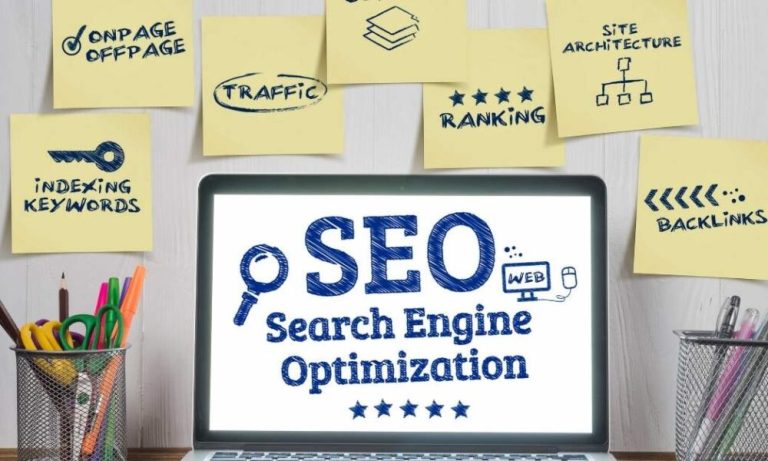In the ever-evolving landscape of digital marketing, where visual content has become increasingly pivotal, understanding the nuances of Image SEO (Search Engine Optimization) can be a game-changer for businesses seeking enhanced online visibility. As search engines evolve, the need to optimise visual elements on your website has become more crucial than ever. In this article by digital marketing Lancashire, we’ll explore the significance of Image SEO and provide actionable tips on how to optimise your visual content for better search engine rankings.
The Power of Visuals in the Digital Landscape
In an era dominated by information overload, visual content has emerged as a potent tool for capturing audience attention. Whether it’s on websites, social media, or other online platforms, images play a pivotal role in conveying messages, establishing brand identity, and enhancing user engagement. However, the full potential of visual content is only realised when it is optimised for search engines.
Understanding Image SEO
Image SEO involves optimising the images on your website to make them more accessible and understandable for search engines. While search engines can’t “see” images in the same way humans do, they rely on various factors to understand and rank visual content. Properly optimised images contribute not only to better search engine rankings but also to a more seamless user experience.
Key Image SEO Factors
File Naming and Descriptions – Start by giving your image files descriptive, keyword-rich names. Avoid generic file names like “IMG001.jpg” and instead use names that reflect the content. Include relevant keywords and separate words with hyphens.
Alt Text Optimisation – The alt text (alternative text) provides a textual description of an image, serving as a crucial element for accessibility and SEO. Craft concise and descriptive alt text that accurately represents the content and includes relevant keywords.
Image Compression – Large image file sizes can slow down your website, negatively impacting user experience and SEO. Use compression tools to reduce file sizes without compromising image quality, ensuring faster load times.
Responsive Images – With the increasing use of mobile devices, it’s essential to use responsive images that adapt to different screen sizes. This contributes to a positive user experience and aligns with Google’s mobile-first indexing.
Image Sitemap – Include images in your website’s XML sitemap to provide search engines with additional information about your visual content. This aids in better indexing and can lead to improved visibility in image search results.
The Impact of Image SEO on User Experience
While Image SEO directly influences search engine rankings, its impact extends beyond algorithms. Optimised images enhance the overall user experience by providing faster load times, especially on mobile devices. Users are more likely to engage with a website that loads quickly and seamlessly, contributing to lower bounce rates and increased dwell time.
Image SEO and Local Business Visibility
For businesses targeting local audiences, optimising images is particularly crucial. Local searches often include visuals, and Google My Business listings heavily rely on images. By incorporating local keywords in image names and alt text, businesses can boost their visibility in local search results.
Common Mistakes to Avoid
Ignoring Image Size – Uploading large images without proper compression can significantly slow down your website. Strike a balance between image quality and file size for optimal performance.
Neglecting Alt Text – Many website owners overlook the importance of alt text. Providing descriptive and accurate alt text not only aids SEO but also ensures accessibility for users with disabilities.
Overlooking Image Relevance – Ensure that the images you use are relevant to your content. Irrelevant visuals can confuse search engines and may lead to a misrepresentation of your website’s focus.
Forgetting Image Captions – Captions provide additional context and can be an overlooked SEO opportunity. Use captions strategically, incorporating relevant keywords where applicable.
Future Trends in Image SEO
As technology advances, the landscape of Image SEO continues to evolve. Visual search capabilities, powered by artificial intelligence, are gaining prominence. Businesses should anticipate the rise of visual search and adapt their Image SEO strategies accordingly. Implementing schema markup for images and exploring emerging technologies like image recognition can position your website at the forefront of these advancements.
Conclusion
In the ever-expanding digital landscape, where visual content reigns supreme, Image SEO stands as a pivotal element for online success. Businesses in every industry, including those in Lancashire, can leverage the power of optimised images to enhance their search engine rankings, improve user experience, and stay ahead of the competition. By understanding the key factors of Image SEO and staying abreast of emerging trends, businesses can ensure that their visual content not only captivates audiences but also resonates effectively with search engines, ultimately leading to sustained online visibility and success.
Visit www.digitalmarketinglancashire.co.uk to find out more about digital marketing in Lancashire works, and how it can catapult your business to new heights.

















